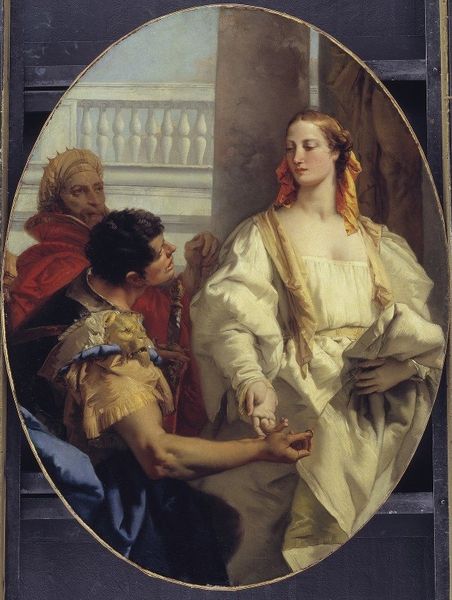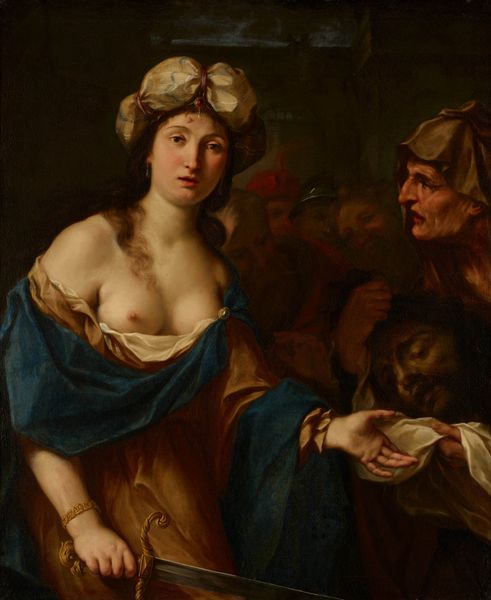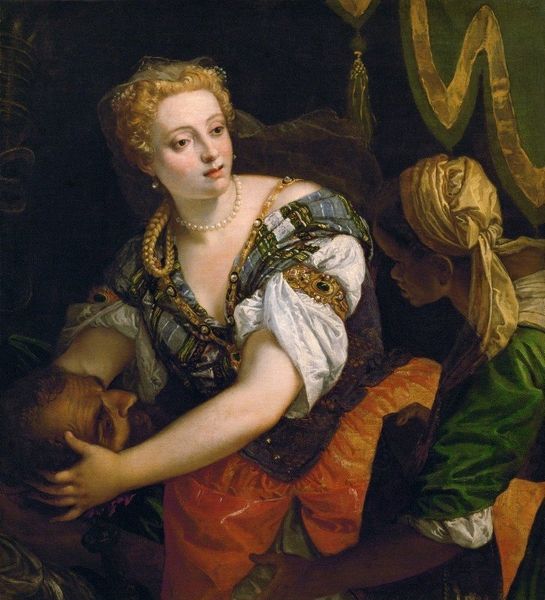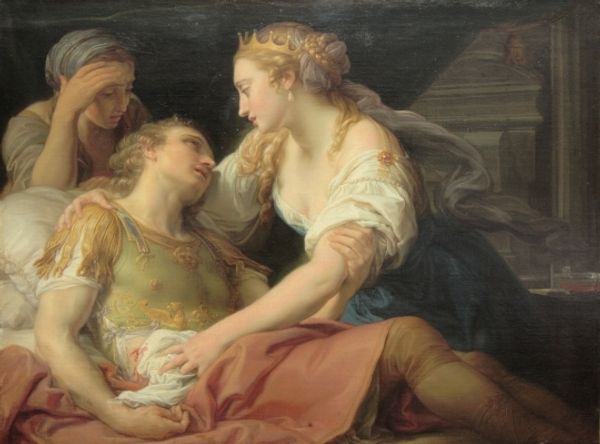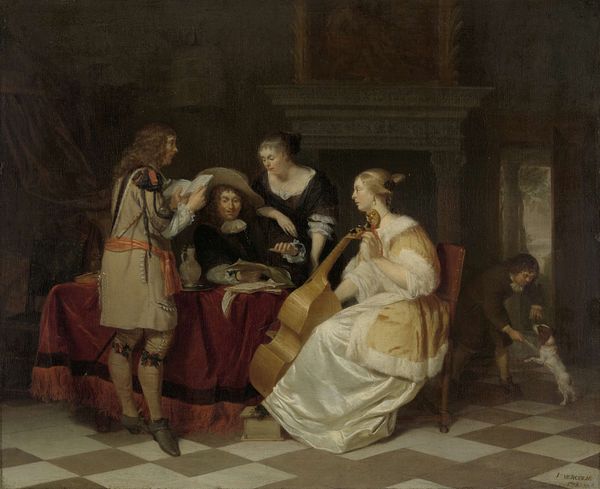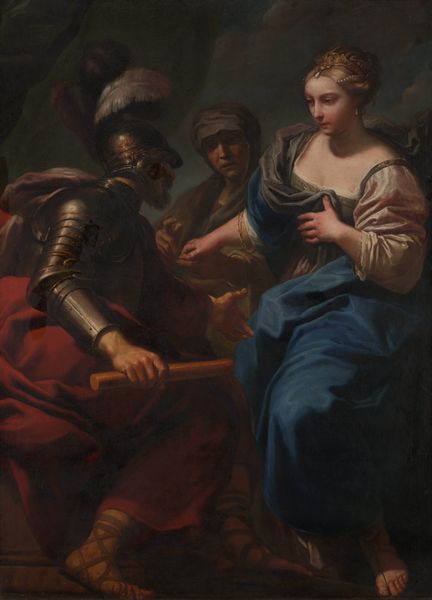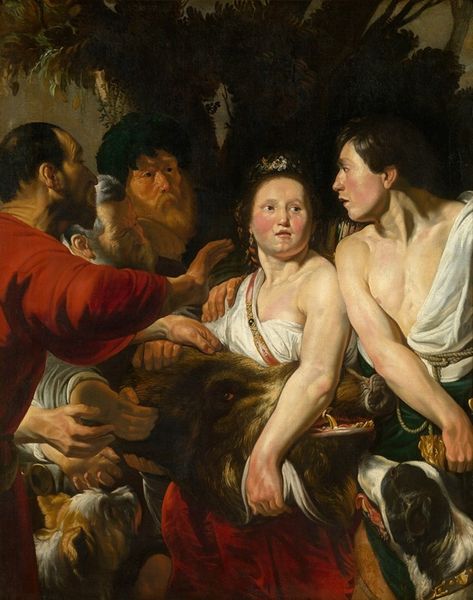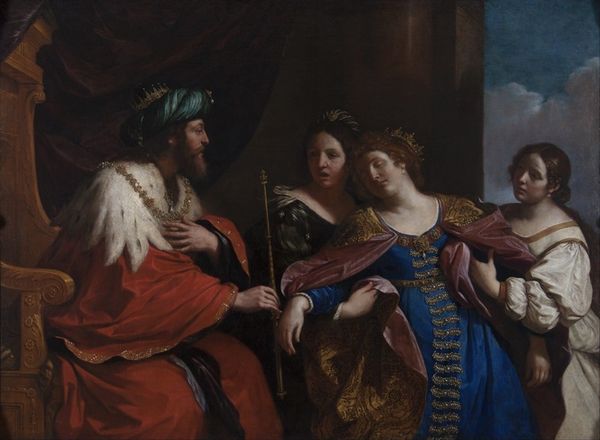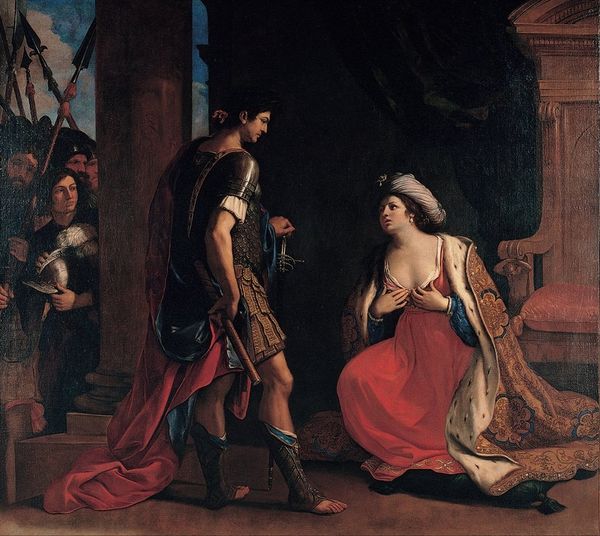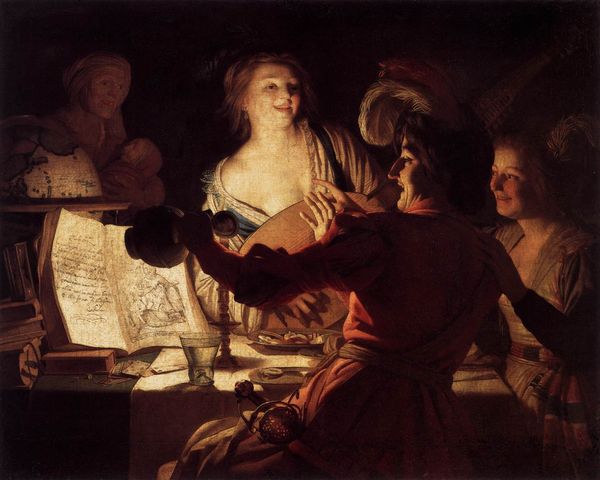
painting, oil-paint
#
portrait
#
allegory
#
narrative-art
#
baroque
#
painting
#
oil-paint
#
figuration
#
classicism
#
costume
#
painting painterly
#
genre-painting
#
history-painting
#
academic-art
#
italian-renaissance
Copyright: Public domain
Editor: We're looking at "Cleopatra Showing Octavius the Bust of Julius Caesar" by Pompeo Batoni. It seems to be an oil painting... it feels very staged. Cleopatra’s almost presenting Caesar to Octavius, but it all feels rather...performative. What strikes you about this work? Curator: I'm drawn to consider how materials signify power in this scene. Cleopatra's attire – the textiles, the jewels – all speak to Egyptian wealth and artistry, yet they are strategically displayed for Octavius, whose armor represents Roman military might. How might we view this display as a negotiation involving not only politics but also control of resources? Editor: That's interesting. It's like she's using her luxury as a form of...currency, in a way. But then what about the bust itself? It's Caesar, but rendered in marble. Does the material matter there, beyond just the image? Curator: Absolutely. Marble, associated with permanence and classical authority, underscores Caesar’s lasting legacy and therefore, his continued influence, even after death. It’s a fabricated representation, designed to inspire a particular response. Consider the labour required to produce the marble bust. It certainly elevates Caesar. It may not be so for Cleopatra and her fabrics though: How might the representation and understanding of Egyptian artistry in fabric be perceived at the time? Was there value to it outside of luxury? Editor: So, Batoni isn’t just showing us a historical moment. He’s making a comment about the economic and material forces at play. The labor put into everything--armor, the bust, the jewelry and even textiles... Curator: Precisely. It prompts us to question who controls the means of production and representation. Think how all of this is for Octavius! Ultimately, "Cleopatra Showing Octavius..." displays political control in how things were presented using different mediums, whether that be stone, clothing, or paint itself. Editor: I never thought about history paintings in terms of production before. Thank you! Curator: A fresh materialist lens can really sharpen our reading of power, even in history paintings, as this piece exemplifies!
Comments
No comments
Be the first to comment and join the conversation on the ultimate creative platform.
